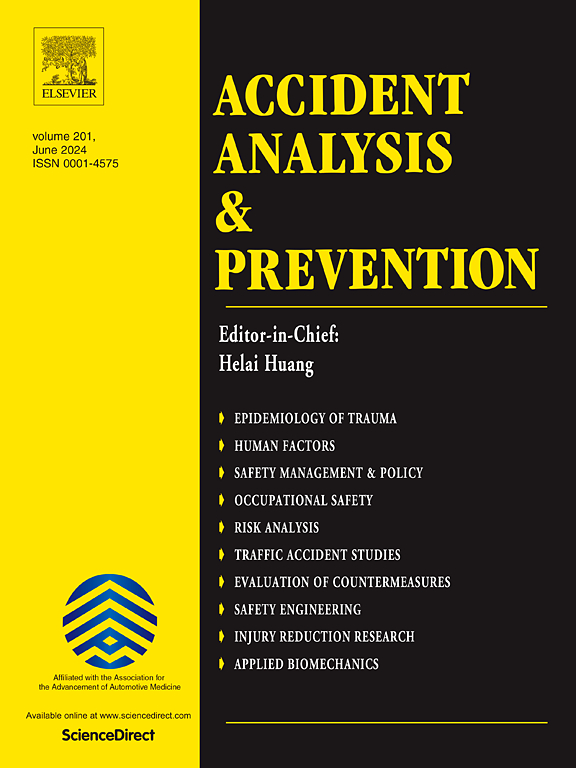使用代理端点将碰撞修改因素转移到自动车辆环境:理论考虑
IF 6.2
1区 工程技术
Q1 ERGONOMICS
引用次数: 0
摘要
尽管《公路安全手册》主要是根据对北美道路状况的统计总结而开发的,但其他国家的工程师已经表示有兴趣将其预测方法应用或“转移”到提供原始数据的地方以外的地方。最近,一个新出现的问题涉及到将碰撞修正因子(CMF)应用于当前条件下估计的未来可能不同的条件,如果自动驾驶汽车增加其市场份额,这可能会发生重大变化。这就引出了一个问题,即如何将过去在安全研究方面的投资与有限的新情况经验相结合,以支持合理的决策。本文的主要主张是,当关于一种道路碰撞类型的背景知识可以用有向无环图可靠地表示时,图的连接结构可以用来识别一组代理端点,这些端点将支持在一种情况下估计的CMF转移到另一种情况。我们提出了两个分析结果来解释这一说法,然后用模拟来说明这些结果的潜在适用性。最后,我们提出了进一步研究的建议,以帮助实现这种方法。本文章由计算机程序翻译,如有差异,请以英文原文为准。
Transferring crash modification factors to automated vehicle environments using surrogate endpoints: Theoretical considerations
Although the Highway Safety Manual was developed primarily from statistical summaries of conditions prevailing on North American roads, engineers in other nations have expressed interest in applying, or “transferring,” its predictive methods to places other than those providing the source data. More recently, an emerging issue concerns the application of crash modification factors (CMF) estimated for recent conditions to possibly different conditions in the future, which could change significantly if and when automated vehicles increase their market share. This leads to the question of how the past investment in safety research might be leveraged with a limited experience of newer conditions in order to support reasonable decision-making. The main claim of this paper is that when background knowledge regarding a type of road crash can be reliably represented by a directed acyclic graph, the graph’s connectivity structure can be used to identify a set of surrogate endpoints that will support transfer of a CMF estimated in one situation to a different situation. We present two analytic results that explicate this claim and then use simulation to illustrate the potential applicability of these results. We end with suggestions for further research to help make this approach practical.
求助全文
通过发布文献求助,成功后即可免费获取论文全文。
去求助
来源期刊

Accident; analysis and prevention
Multiple-
CiteScore
11.90
自引率
16.90%
发文量
264
审稿时长
48 days
期刊介绍:
Accident Analysis & Prevention provides wide coverage of the general areas relating to accidental injury and damage, including the pre-injury and immediate post-injury phases. Published papers deal with medical, legal, economic, educational, behavioral, theoretical or empirical aspects of transportation accidents, as well as with accidents at other sites. Selected topics within the scope of the Journal may include: studies of human, environmental and vehicular factors influencing the occurrence, type and severity of accidents and injury; the design, implementation and evaluation of countermeasures; biomechanics of impact and human tolerance limits to injury; modelling and statistical analysis of accident data; policy, planning and decision-making in safety.
 求助内容:
求助内容: 应助结果提醒方式:
应助结果提醒方式:


